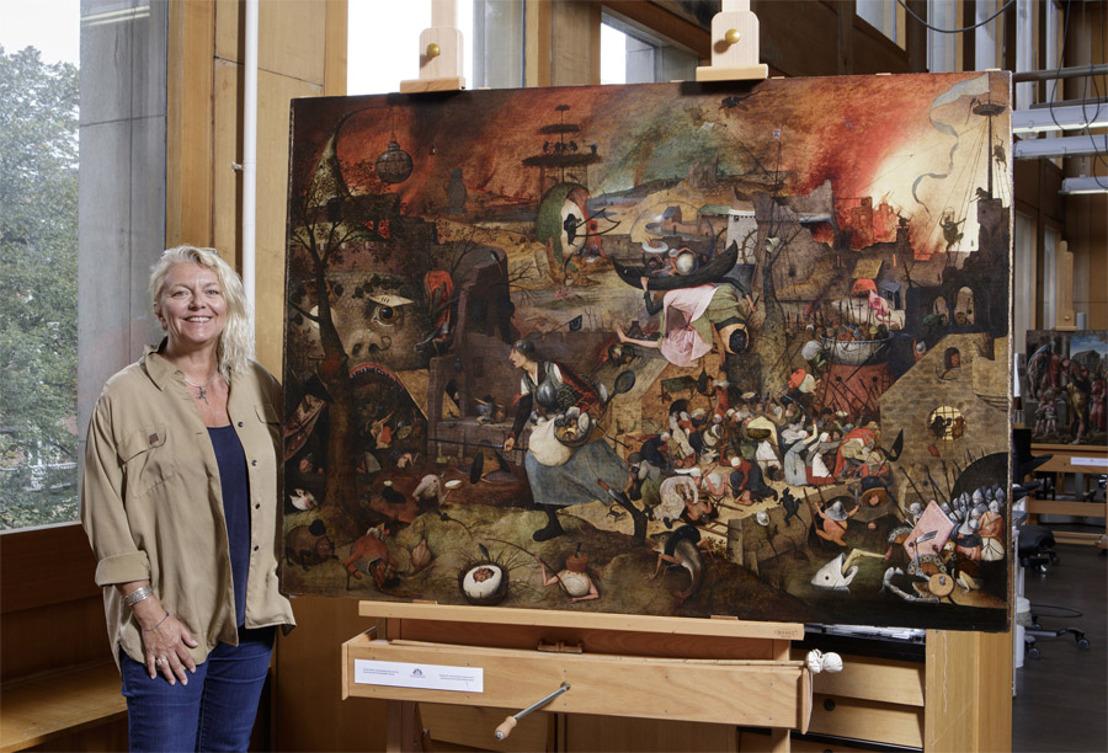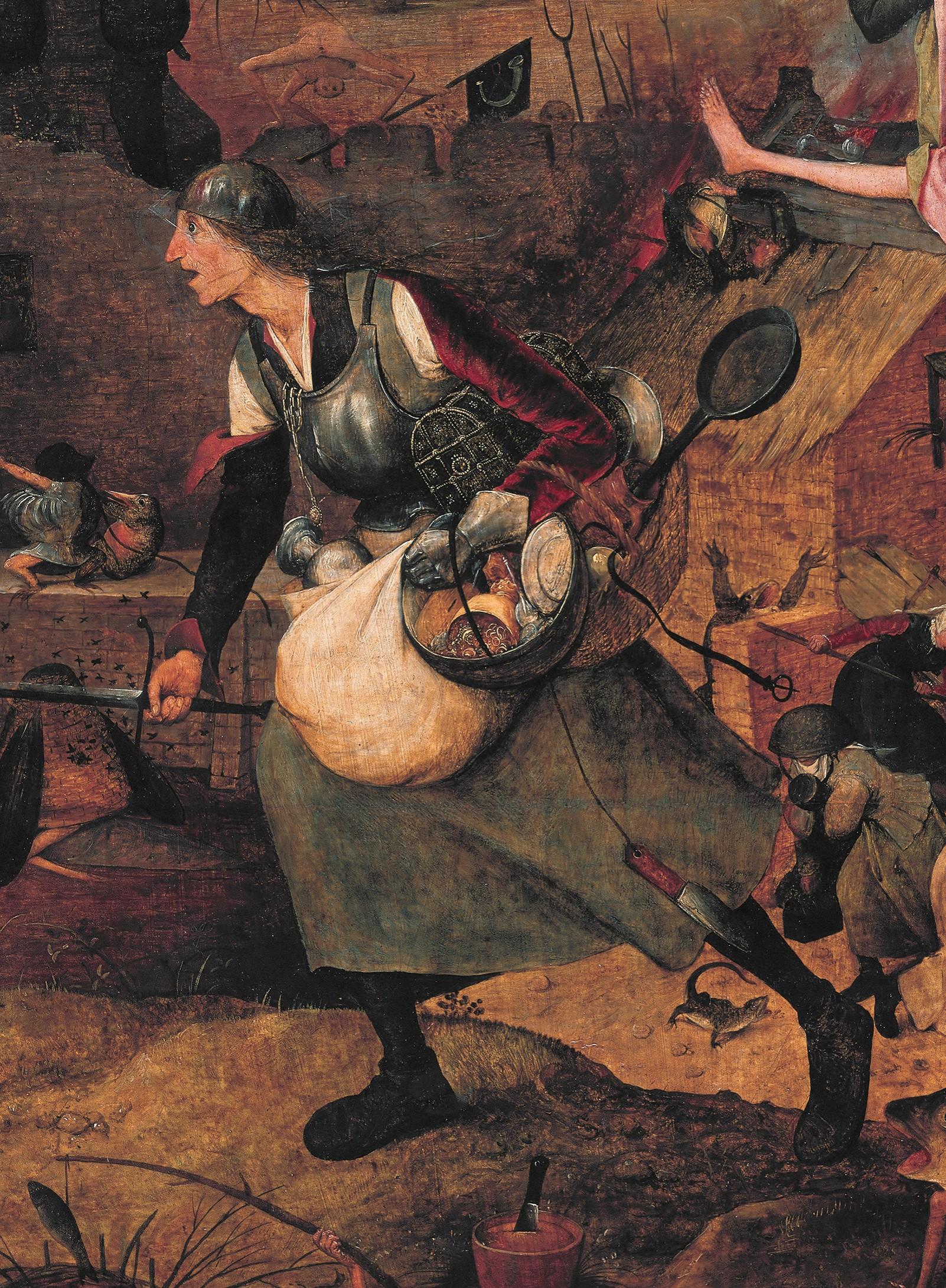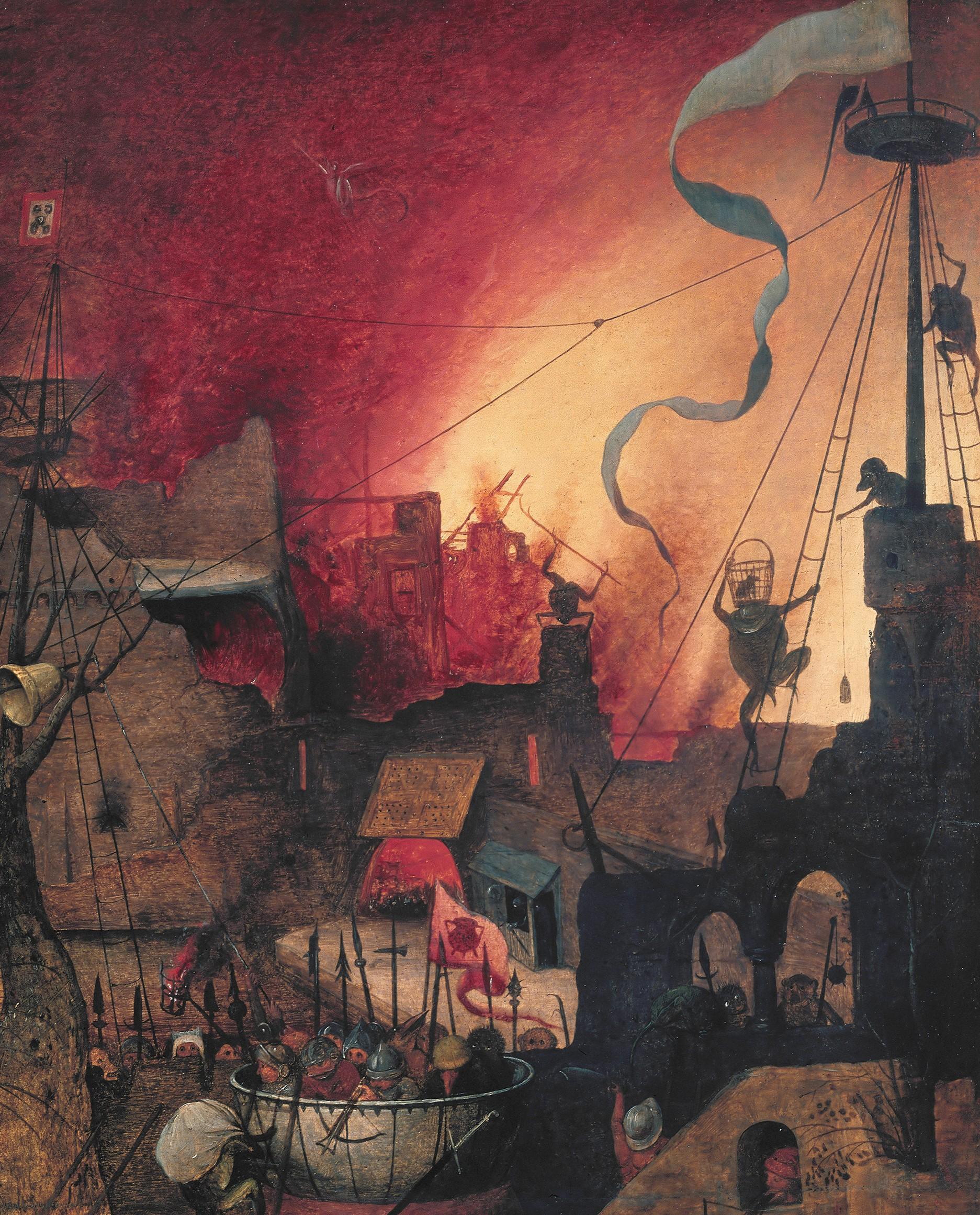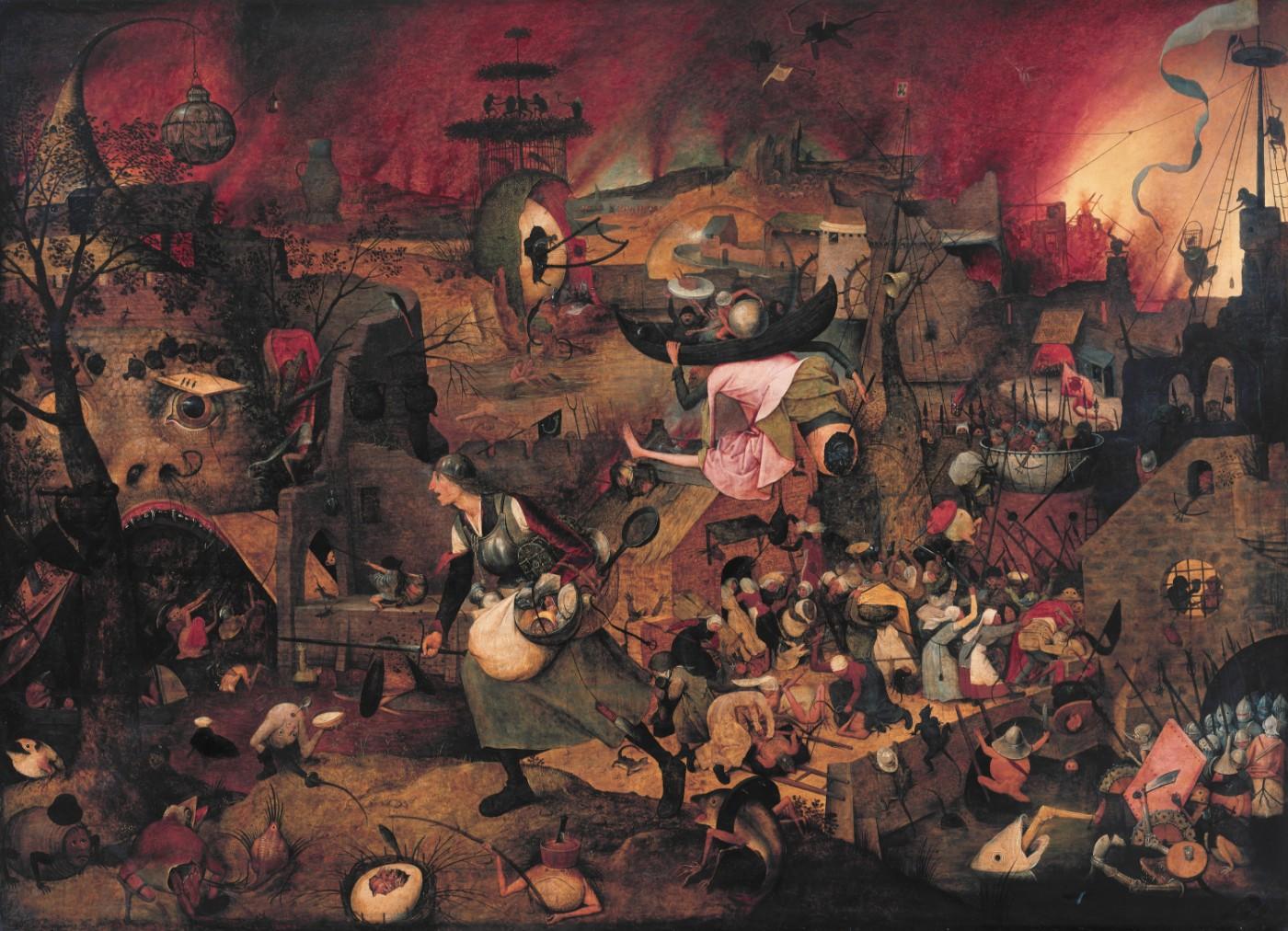Multidisciplinary approach
Pieter Bruegel the Elder’s Dulle Griet was subjected to thorough scientific examination at KIK-IRPA using imaging techniques including UV fluorescence and infrared photography and reflectography, as well as analytical methods such as Raman spectroscopy, electron microscopy, gas chromatography and innovative macro-XRF. With the aid of these high-tech tools, the experts were able to analyse the painting’s material history and structure.
Spectacular discoveries
The multidisciplinary study made several spectacular discoveries, which amend the results of earlier research performed in 2011 and 2012. The use of new, more advanced techniques allowed the painting’s various underlying layers to be documented and studied one by one. Macro-XRF maps showing the distribution of copper and calcium carbonate reveal that Bruegel did not add the title ‘Dul’ to the panel: the looping inscriptions or scratches were applied later – perhaps accidentally – and were also detected elsewhere in the painting. The dating of the work has also been adjusted by two years, as the date ‘1563’ was discovered on the panel after cleaning and the removal of layers of historical overpainting. The previously accepted date of the work was 1561.
Antwerp or Brussels?
The new dating of Bruegel’s Dulle Griet immediately triggered a flurry of debate as to where the artist produced this infernal scene: Antwerp or Brussels? Bruegel most likely married Mayken Coecke at the Kapellekerk in Brussels in August 1563. The banns are documented as having been taken out on 25 July that year at the Cathedral of Our Lady in Antwerp. It is not known precisely when Bruegel moved to Brussels so the question of where the painting was done cannot be answered at this point. He used a similar type of panel in the years both before and after 1563 and we do not know where he purchased them. Nor is it known how long Bruegel worked on a particular painting. Could he have completed this hell scene in the space of just four or five months and was it done entirely in Brussels? Did he finish the painting in Antwerp before moving to Brussels? Or did the artist take the semi-finished panel with him to his new home? Some of the questions surrounding Bruegel’s Dulle Griet, will have to go unanswered for the time being.




























